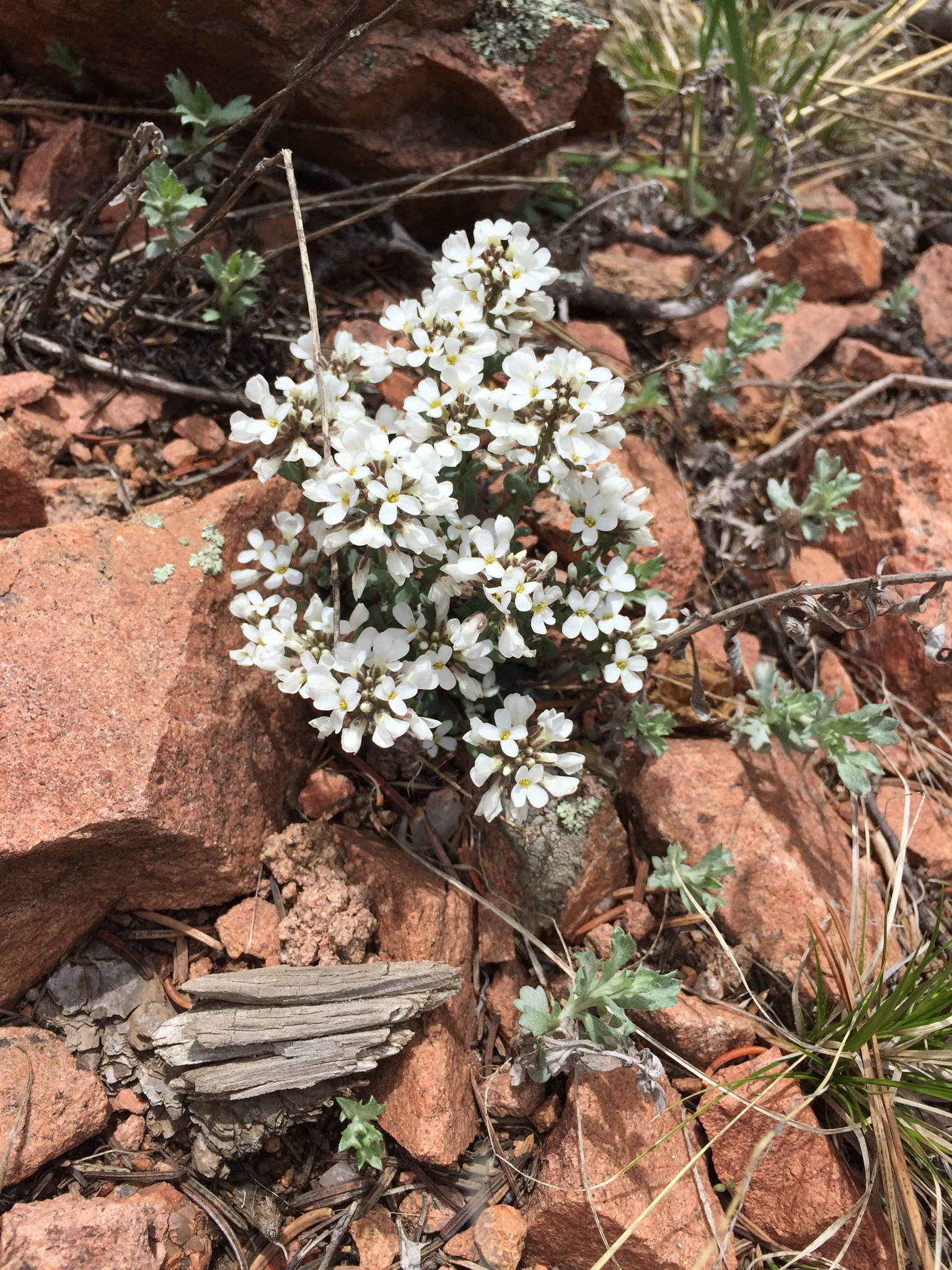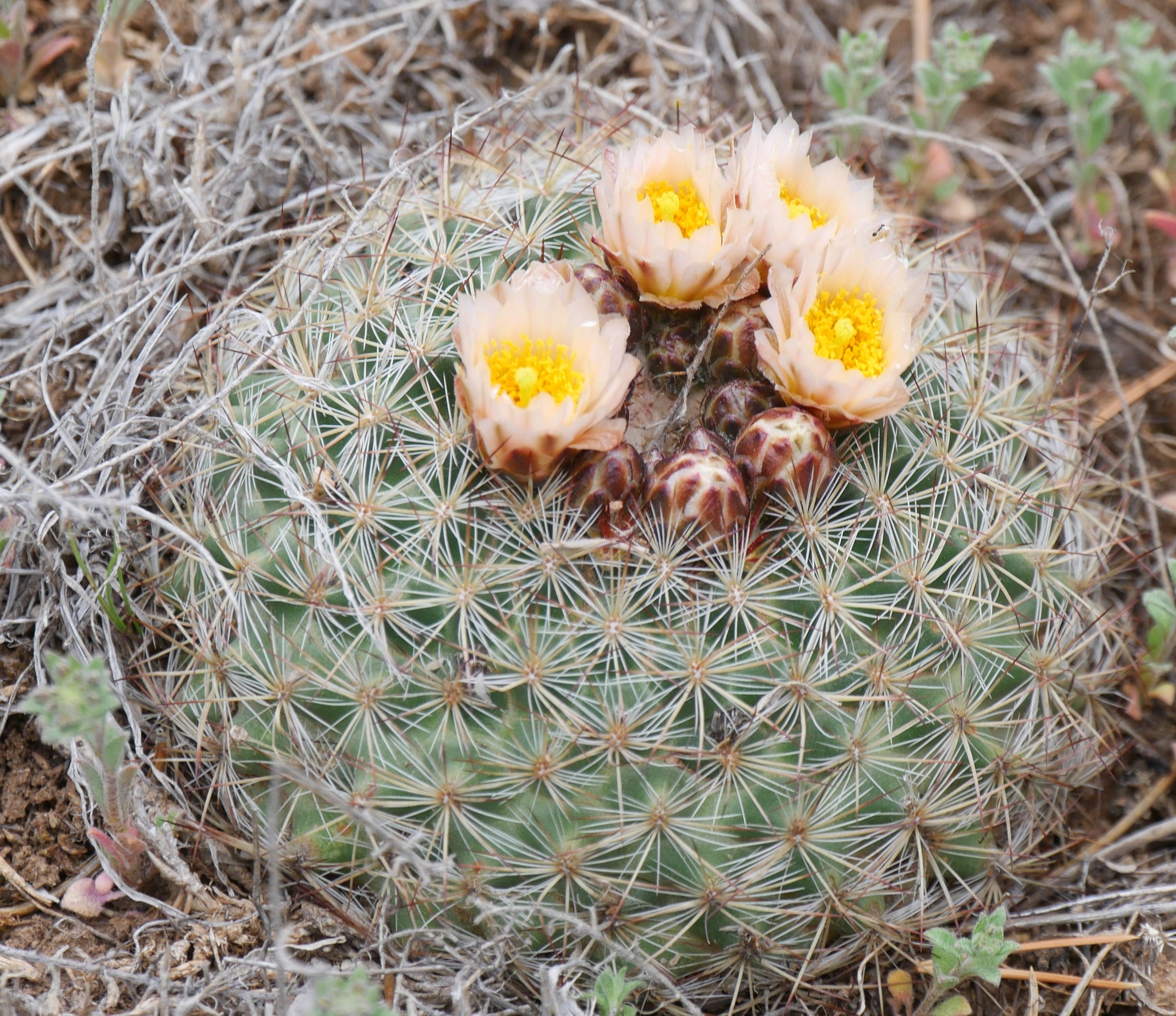Early Spring Colorado Wildflowers
Longer days, muddy trails, erratic weather – it sounds like springtime is coming to Colorado! Over the next few weeks, keep an eye out for these native early-springtime sprouts.
 Western Springbeauty, Lory State Park, observed by Chris Prah (chrisp99) on May 16, 2020.
Western Springbeauty, Lory State Park, observed by Chris Prah (chrisp99) on May 16, 2020.
Claytonia rosea (klay-TOH-nee-uh RO-zee-uh), Western Springbeauty
Starting in mid-March, look for small delicate flowers with 5 light pink petals lined with magenta veins and bubblegum-pink anthers1. Habitat: Montane forests of ponderosa pine and pinyon-juniper and oak woodlands, from 5500-8500 feet. Ethnobotany: The round marble-sized underground tubers are edible and reportedly taste like mild radishes when raw and like potatoes once cooked. The edible leaves contain vitamins A and C2. In fact, this plant is a member of the Montiaceae, nicknamed the “miner’s lettuce” family because some species, which are rich in vitamin C, were reportedly eaten by miners during the California gold rush days to prevent and cure scurvy. Etymology: Claytonia was named in 1753 for John Clayton, a naturalist from Virginia whose plant specimens formed the basis of Linnaeus' knowledge of North American plants3; rosea means ‘rosy’ for the color of the flower.
 Prairie Pasqueflower, Lory State Park, observed by Bryan Maltais (bryan-maltais) on April 27, 2020.
Prairie Pasqueflower, Lory State Park, observed by Bryan Maltais (bryan-maltais) on April 27, 2020.
Pulsatilla nuttalliana (pul-sa-TIL-uh nut-al-ee-AH-nuh) (syn: Anemone patens var. multifida), Prairie Pasqueflower
One of the earliest bloomers, this spring wildflower emerges soon after winter snows retreat, typically around Passover and Easter. A whorl of fuzzy dark-brown to dark-purple leaves loosely encompasses the white to blue-purple flower cupped around a dense cluster of bright yellow stamens. As the plant matures, the flowering stem gets taller and taller and the styles elongate to long silky tails, which eventually carry the seeds away on the wind. The final seed head looks like a shaggy ball of hairy threads1. Habitat: Gravelly soils on open hillsides, in meadows, and in forests from 5400-13,000 feet. Ethnobotany: The fresh plant is poisonous and highly irritating to the skin and mucus membranes. The dried plant, however, has been used as a medicinal agent for various ailments and conditions: dried leaves for rheumatism, a poultice of pressed dried leaves as a topical treatment, an aroma-therapy bouquet of freshly dried ground leaves to alleviate headaches, and pulverized roots were used to combat lung disorders4. Etymology: Pulsatilla is from the Latin for "pulsing", "moving about", plus the diminutive, "illa": thus "a bit of quivering" (from the wind); nuttalliana is named after Thomas Nuttall, a 19th-century botanist. The common name "pasque flower" is from the Hebrew word for Passover, "Pasach”, and is also associated with Easter5.
 Fendler’s Pennycress, Staunton State Park, observed by our very own Jeff Thompson (j_thompson) on May 20, 2016.
Fendler’s Pennycress, Staunton State Park, observed by our very own Jeff Thompson (j_thompson) on May 20, 2016.
Noccaea fendleri (no-KA-ee-a FEND-ler-eye) (syn: Thlaspi montanum var. fendleri), Fendler's Pennycress
Beginning to bloom in mid-March, these plants form clusters of tiny 4-petal white flowers with golden yellow centers atop a leafy stem. Flattened seed pods grow horizontally out from the stem and curve up slightly at the tip. Habitat: Dry or moist, open alluvial flats, rocky slopes, limestone cliffs, alpine or subalpine meadows, or near snowbanks, streamsides, or forest clearings. Growing from 5,200-14,300 feet, this mustard covers an unusually broad elevational range, and can be found on the summit of Pikes Peak! Ethnobotany: Used by the Ramah Navajo as a lotion used as a dermatological aid for itching, a ceremonial medicine, and a preventative medicine6. Etymology: Noccaea was named in 1802 for Domenico Nocca, an Italian clergyman and botanist, and fendleri was named for August Fendler, a 19th century German plant collector.
 Nuttall’s Violet, Steamboat Lake State Park, observed by Richard Bunn (rbunn) on June 4, 2019.
Nuttall’s Violet, Steamboat Lake State Park, observed by Richard Bunn (rbunn) on June 4, 2019.
Viola nuttallii (vy-OH-la nut-AL-ee-eye), Nuttall’s Violet
This early spring wildflower is one of the few violet species with lanceolate leaves (violets usually have distinctive heart-shaped leaves). Yellow flowers with purple nectar guides on the lower three petals appear as early as mid-March. Nuttall's violet serves as a larval host for the Coronis Fritillary butterfly. Habitat: Dry prairie, open grasslands, bluffs, and woodlands, often in rocky situations from 3500-11,500 feet. Ethnobotany: Although the rhizomes, fruits, and seeds are considered poisonous, the leaves and flowers of Nuttall’s violet are edible and are high in vitamins A and C7. Etymology: Viola is the Latin term for the color violet, and nuttallii is named for Thomas Nuttall, a 19th century English botanist.
 Common Starlily, Roxborough State Park, observed by kirbz on April 8, 2017.
Common Starlily, Roxborough State Park, observed by kirbz on April 8, 2017.
Leucocrinum montanum (loo-koh-KRY-num mon-TAY-num), Common Starlily
This is the only species of the genus Leucocrinum, but it does not disappoint! Fragrant star-shaped white flowers appear to grow directly from the center of a basal rosette of narrow, grass-like leaves. Once flowering is completed in late May or June, the entire aboveground part of the plant withers away, leaving the ripened fruit pod buried underground among the fleshy, finger-like roots8. Habitat: Sandy or rocky areas on grassy slopes of short-grass prairies, sagebrush deserts, and montane meadows from 3500-8000 feet. Ethnobotany: Native Americans have eaten the roots, and the Paiute and Shoshone tribes used the roots to create a poultice as a dermatological aid applied to sores or swellings9. Etymology: Leucocrinum comes from the Greek word ‘leukos’ (white) and ‘krinon’ (lily); montanum means ‘of the mountains’.
 Simpson’s Hedgehog Cactus, Ridgway State Park, observed by Judith Ellen Lopez (taogirl) on April 20, 2019.
Simpson’s Hedgehog Cactus, Ridgway State Park, observed by Judith Ellen Lopez (taogirl) on April 20, 2019.
Pediocactus simpsonii (pee-dee-oh-KAK-tus simp-SON-ee-eye), Simpson's Hedgehog Cactus
White, pink, or yellow flowers sit in a cluster atop a softball-sized ball usually half-buried in the ground. Spine cover tends to be dense, nearly or completely obscuring the surface. The 15 to 35 white radial spines are thin and short, while the 4 to 11 central spines are thicker, longer (up to 3/4 inch), and brown or yellow at the tips10. Habitat: Dry, rocky soil on exposed ridges, often found with pinyon-juniper, sagebrush, or montane and prairie grassland communities. This is the highest-elevation cactus species in the Colorado flora, growing from 5200-10,500 feet. Etymology: The “pedio" in Pediocactus means "plains”, and simpsonii was named in 1863 for James H. Simpson, a 19th century explorer with the U.S. Army Corp of Engineers11. The original genus name was Echinocactus, which comes from the Greek “echinos” (porcupine, hedgehog) – thus, the common name of “Hedgehog Cactus”.
References:
- https://conps.org/wp-content/uploads/2018/08/Aquilegia_2018_42.2_Spring.pdf
- http://montana.plant-life.org/cgi-bin/species03.cgi?Portulacaceae_Claytonialanceolata
- https://www.swcoloradowildflowers.com/White%20Enlarged%20Photo%20Pages/claytonia.htm
- https://www.fs.fed.us/wildflowers/plant-of-the-week/pulsatilla_patens_multifida.shtml
- https://www.swcoloradowildflowers.com/Blue%20Purple%20Enlarged%20Photo%20Pages/pulsatilla%20nuttalliana.htm
- http://naeb.brit.org/uses/search/?string=Fendler%27s+Pennycress
- https://www.fs.fed.us/wildflowers/plant-of-the-week/viola_nuttallii.shtml
- https://www.fs.fed.us/wildflowers/plant-of-the-week/leucocrinum_montanum.shtml
- http://naeb.brit.org/uses/search/?string=leucocrinum+montanum
- https://www.wildflower.org/plants/result.php?id_plant=PESI
- https://www.swcoloradowildflowers.com/White%20Enlarged%20Photo%20Pages/pediocactus%20simpsonii.htm




